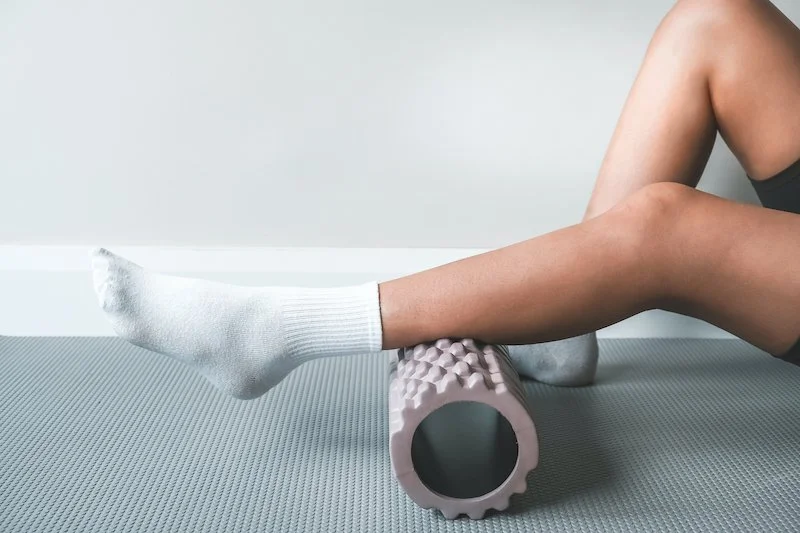The Link Between Emotions and Myofascial Tissue Tension
There is an irrevocable link between our emotional states and the way our body feels each day. Numerous studies and articles revolve around the body’s myofascial system on pathologic, microscopic, physiologic, and macroscopic levels. However, we still don’t have a deep knowledge of myofascial functions or often a shared perspective on how to classify them. As therapeutic methods evolve alongside knowledge of the body, new data arises surrounding the link between emotions and myofascial tissue tension. In this article, we’ll discuss this complex and impactful link, including how your myofascia, interoceptors, and fascial planes function.
How Fascia Works
The human body is a complex working organism in which the bones, muscles, nerves, and organs are tied together by fascia. Each part connects to other body parts, meaning something such as lower back pain may stem from a nearby restriction in the glutes, hips, or even an individual foot. This connectivity has a significant impact on a person’s experiences with levels of pain and performance abilities. Fascia is a system and a tissue, consistently shapeshifting as connective tissue forming under the skin to enclose, separate, and attach internal organs and muscles. The three main types are superficial, deep, and loose fascia.
Superficial fascia includes the soft material you can feel around your bully or glutes, for example. It resides just under your skin as a matrix of loose and web-like collagen fibers, separating your skin from your muscles to enable safe, non-abrasive movement. Deep fascia surrounds the muscles or tendons as a thick layer. Loose fascia works as a “slippery seam” connecting the layers of deep fascia, and layers of superficial and deep fascia. Myofascia is a term combining muscle fibers (myo) and associated fascia. For example, a calf muscle is a myofascial structure. People often use “myofascia” and “fascia” interchangeably.
The Importance of Interoceptors
In discussing how the human body connects internally and experiences pain throughout its individual parts, it’s also important to understand how interoceptors work so you can perceive options for myofascial pain relief. Interoceptors detect stimuli and inform the central nervous system about them. The interoceptors include the chemoreceptors, nociceptors, and stretch receptors. Your carotid body is a specialized chemoreceptor that detects carbon monoxide and low blood pH, (which can result in respiratory issues). Nociceptors act as sensory receptors for any present painful stimuli. The carotid sinus contains nerve endings that work as stretch receptors.
When interoceptors inform the central nervous system of various present stimuli, the central nervous system tells the specific involved parts of the body to respond to these changes in the external or internal environment. These quick responses are often short-lasting but important for reducing and preventing pain and illness. For instance, interoceptors respond to temperature, touch, pain, chemicals, light, head positions, and sound and then tell the central nervous system. The central nervous system then tells the skin, tongue, nose, eyes, and ears to respond. How well your body responds to pain and health issues affects your daily life.
Fascial Planes and Massage
There is a strong connection between how the body responds to pain and the way a person can feel emotionally, mentally, and spiritually. One of the most common types of pain and discomfort involves myofascial tissue tension. This type of tension develops when stimuli, such as muscle tightness, set off triggers in the muscles. Incidents such as continuous muscle stress or severe injury can cause trigger points to develop. As a massage therapist works to understand the inner operations of your body and relieve it of pain, they may focus therapeutic techniques on one or more of your fascial planes. The fascial planes are the areas between two fascial layers.
Your fascial system can hold onto subtle tension from various types of trauma, including physical, emotional, mental, and spiritual. With a massage therapist, you can feel more lasting and effective relief from this tension and pain as they address your trauma roots fully. Some of the top therapeutic methods that address the link between emotions and myofascial tissue tension include myofascial release, craniosacral release, or a combination. Myofascial release targets tightness and tension in your trigger points and the surrounding area. Craniosacral release is another hands-on method that relieves pressure around the central nervous system.
Massage Therapy for Myofascial Tissue Tension
Another method for effective myofascial tension relief with a therapist is reiki massage. Massage therapists such as at Prismatic Healing in Chicago often use a combination of myofascial release, craniosacral release, and reiki massage methods to provide clients with full body and energy relief. Relieving myofascial tissue tension requires a patient, gentle touch to fully unwind it. With reiki massage, your therapist can transmit energy with their hands to your body to provide your body with improved flow and balance. Improved flow and balance can provide and promote widespread healing from all manner of trauma and pain you may feel.
Reiki works as both a hands-on and hands-off method of therapy and pain relief. It works to soften and unravel your myofascial tension while energy heals and harmonizes during in-person sessions or remote massage therapy sessions. In this way, reiki can promote healing without you needing to be in a certain environment. You can feel relief from emotional and myofascial pain from the comfort of an environment that suits you and your healing process. Remote healing may also help you to focus better, potentially providing quicker and more effective overall body and energy healing.
Relieving Emotional and Myofascial Tissue Tension
There is an irrevocable link between your emotions and myofascial tissue tension and trauma. When you experience emotional, mental, or spiritual trauma, you feel it throughout your body, which can deeply affect your quality of life. When you endure various types of physical trauma in your life, it affects your emotional, mental, and spiritual wellness. For effective relief from emotional and myofascial tissue trauma through energy and body healing, visit Prismatic Healing in the West Town neighborhood of Chicago today.


